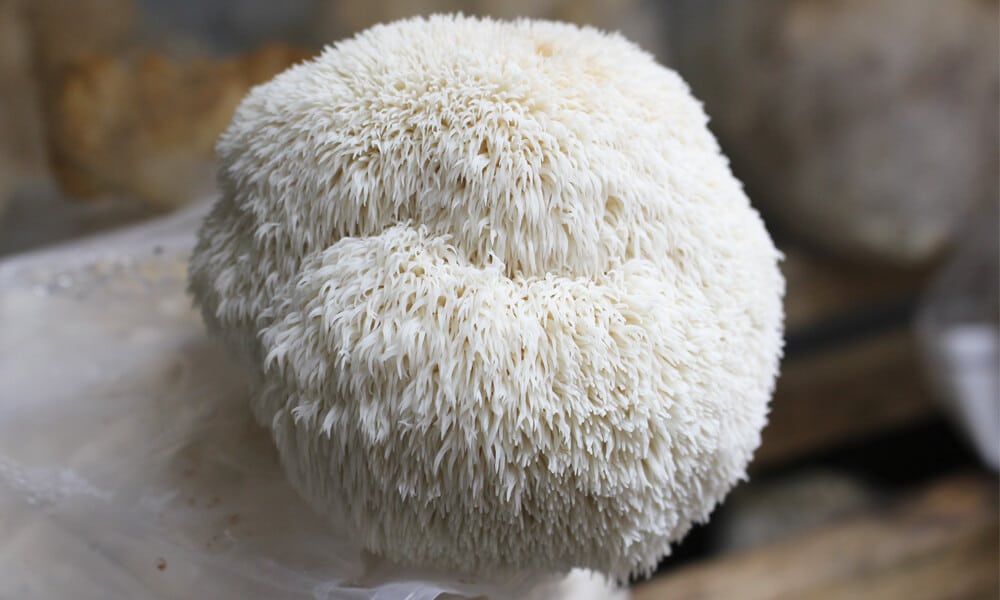Table of Contents
What feature or aspect of your body would you say is different from others, or individuates you? Just like your fingerprints are unique, your microbiota defines and differentiates you, and comprises a complex ecosystem, your body; the sum of countless organisms balanced and aligned with you, living as your guests.
What happens when this delicate balance is disturbed?
Microbiologist and Nobel laureate, Professor Elie Metchnikoff, said that most diseases begin in the digestive tract. According to him, this happens when “good” bacteria are unable to control “bad” bacteria. In this instance, dysbiosis occurs; an imbalance that has been linked to the development of certain diseases, including a number of chronic diseases and cancer.
Intestinal microbiota
he intestinal microbiota is also known as the intestinal flora, gut flora, or microflora. All these terms are used to designate the community of microorganisms that live in the gastrointestinal tract of mammals.
Intestinal microbiota: health indicator since 2001
The human microbiota is made up of 10-100 trillion microbial cells that live symbiotically in each person’s gut, mainly made up of bacteria. Thanks to the work of Lederberg and McCray, who coined the term “microbiome”, the concept of the impact of the intestinal flora affecting overall balance of health gained strength. Their initial findings from animal models on the influence of the microbiota on host health gained the attention of researchers and inspired new research and publications in which the relationship of the microbiome with the development of various intestinal complaints was correlated. Research showed the influence of the microbiota on conditions such as irritable bowel syndrome (IBS), intestinal inflammation, and celiac disease, and also on non-gut related psychiatric disorders, obesity, allergies, asthma and various cardiovascular conditions as well.
The second brain
Since the 1970s, various studies have been published evidencing the validity of the gut-brain axis, and how it can affect global functioning despite the blood-brain barrier. We know, for example, that serotonin (related to happiness and good mood) is mostly produced in our intestines.
It has also been shown that chemicals produced by intestinal bacteria have an influence on the immune system and these, in turn, on the brain.
Alterations in bacterial communities have also been observed in animal models when the animals were subjected to stressful situations.
The functions of the microbiota
It has been suggested that the metabolic activity of the microbiota is comparable to that of the liver, hence it can be considered an organ with specific functions. We now know that the microbiota performs the following functions:
- Regulates the body’s immune response
- Is involved in the production of vitamins
- Participates in the regulation of lipid metabolism
- Has a role in the production of short chain fatty acids
Short-chain fatty acids (SCFAs) are produced when dietary fibre is fermented by intestinal bacteria. The intestinal epithelium employs SCFAs to maintain its barrier function, thus reducing inflammatory immune responses related to digestive conditions.
Why talk about the microbiome now?
The bacterial community in the colon represents the largest fraction of the human microbiota, where it is estimated that there are between 400 and 1500 species of bacteria. However, we cannot forget that the microbiota encompasses other microorganisms such as fungi, archaea, viruses and parasites that coexist in perfect harmony under our skin.
On a higher level, we can talk about the microbiome. Although they have been used as synonyms, they are not. The microbiome is the sum of the microbiota, but also its genes, metabolites and the specific environment that surrounds them.

Health problems associated with microbiota dysbiosis
The balance, or, eubiosis, of the microbiota is directly related to our lifestyle. However, we cannot ignore the influence of genetic inheritance and other recently discovered factors. There are studies that demonstrate the influence of the mother’s vaginal and intestinal microbiota during pregnancy and childbirth, and suggest that the type of birth (natural or by caesarean section) will have repercussions that directly influence the infant’s microbiome.
A diet with low or no fibre content, excessive alcohol consumption, regular ingestion of ultra-processed foods and the abuse of antibiotics have been linked to dysbiosis and the development of various diseases:
- Diets rich in fats, polyunsaturated fatty acids and industrial meat have been linked to a higher incidence of Crohn’s disease and ulcerative colitis.
- The risk of suffering from inflammatory bowel disease can be reduced by regulating the intestinal microbiota with a vegetarian diet.
- The development of colorectal cancer has been associated with levels of inflammation and structural changes in the microbiota. The origin of these changes could be related to the growth of sulphate reducing bacteria that derive from excess consumption of red meat.
- Fibre-rich diets increase the production of SCFAs that are beneficial for the epithelium of the large intestine (colonocytes) and also have antitumor properties.
Dietary fibre
More and more nutritionists are recommending an increase in fibre consumption from whole food sources by increasing intake of mushrooms, fruit, seeds, vegetables and whole grains to preserve a better state of health. However, why is fibre necessary if our body is not able to assimilate it?
The consumption of these non-digestible carbohydrates (polysaccharides, oligosaccharides, and lignins) serves to make good intestinal bacteria produce SCFAs, which protect the intestinal barrier from pathogenic organisms. The consumption of dietary fibre is also associated with:
- better intestinal transit
- optimisation of mineral absorption
- immune system regulation
- appetite balance
- regulation of glucose and lipid levels
Eating for a balanced microbiota
According to various scientific reviews, how we eat has an important impact on the composition of our microbiota. The standard Western diet or standard American diet is not generally considered to be optimum for a good state of health, with a couple of exceptions. For example, the traditional Mediterranean and Atlantic diets are two subtypes of Western diets that are considered exceptions and considered adequate for the maintenance of a good state of health:
- The Mediterranean diet has been associated with significant protection from chronic degenerative diseases.
- The Atlantic diet has been associated with metabolic health and a decrease in mortality caused by coronary heart disease and some types of cancer. The inclusion of group B vitamins, omega 3 fatty acids and iodine could be responsible for these effects.
Other ways to protect against intestinal dysbiosis:
Prebiotics
Dietary fibre and prebiotics serve as food for the microbiota and in many cases it is difficult to differentiate between them. In some scientific publications, prebiotics are referred to as a type of dietary fibre with additional beneficial health effects since they improve the health of the intestinal epithelium and reduce proinflammatory states.
Insoluble fibre is the predominant prebiotic compound in mushrooms, and is present in virtually all species, especially Lion’s Mane, but also Oyster and Thistle mushrooms.
Beta-glucans are one of these forms of fibre. These polysaccharides have been associated with the growth of three strains of Bifidobacterium spp. and Lactobacillus spp. and the potential immunoregulatory and antitumor effects higher levels of these beneficial bacteria confer.
In the first compendiums of oriental medicine, Lion’s Mane was recommended for the digestive system and memory support. Thanks to scientific advances, we understand the close relationship between the gut-brain axis and why these mushrooms are a food that helps in the maintenance of homeostasis of the digestive bacterial community.
Mushroom Bioscience
At Hifas da Terra, we develop formulas based on the medicinal mushrooms we research
Prebiotic substances can control intestinal dysbiosis by encouraging the growth of Bifidobacterium spp. and Lactobacillus spp. In addition, they help prevent pathogenic cells from adhering to the cells of the intestinal mucosa.
The use of prebiotics can have a beneficial effect in cases of colorectal cancer, colitis, constipation and Crohn’s disease.
Other sources of prebiotics are: roots, tubers and plant rhizomes (which contain inulin); bananas, onions and grains (which contain fructooligosaccharides, or FOS) as well as milk derivatives (which contain galactooligosaccharides, or GOS).
Probiotics
The use of probiotics – that is, specific bacteria that can displace bad bacteria – favours the restoration of intestinal eubiosis. According to a study published by the WHO, 2017, probiotics improve the function of the intestinal barrier. Other studies show that they prevent the adhesion and colonisation of pathogens and toxins. The combination of both prebiotics and probiotics has been used to address various pathologies. More recently, phagotherapy – the use of bacteriophages or phagocytes (viruses that infect bacteria) – and faecal microbiota transplants have been showing promising results.
Summary
Acquiring healthy habits has a direct impact on our state of health and can significantly alter the composition of the intestinal microbiota. Additionally, the results from randomised research studies indicate that diets with low total calorie intake, which are rich in fibre and vegetables guarantee changes in the intestinal microbiota with ensuing health maintenance benefits.
References
- Antonella Gagliardi (2018). Rebuilding the Gut Microbiota Ecosystem. Int. J. Environ. Res. Public Health, 15(8), 1679.
- Eloísa Salvo-Romero et al. (2015) Función barrera intestinal y su implicación en enfermedades digestivas. Rev Esp Enferm Dig (Madrid) Vol. 107, N.º 11, pp. 686-696.
- Esther Molina Montes (2018) Microbioma, microbiota y cáncer. SEBBM. Grupo de Epidemiología Genética y Molecular, Centro Nacional de Investigaciones Oncológicas (CNIO).
- Friedman M (2015) Chemistry, Nutrition, and Health-Promoting Properties of Hericium erinaceus (Lion’s Mane) Mushroom Fruiting Bodies and Mycelia and Their Bioactive Compounds. J Agric Food Chem. Aug 19;63(32):7108-23.
- Harmsen HJ et al. (2016) The Human Gut Microbiota.Adv Exp Med Biol. 2016;902:95-108.
- Luke K Ursell et al. (2012) Defining the Human Microbiome. Nutr Rev. 2012 Aug; 70(Suppl 1): S38–S44.
- Niv Zmora et al. (2019) Transforming medicine with the microbiome. Science Translational Medicine. Vol. 11, Issue 477.
- Valerio Iebba et al. (2016) Eubiosis and dysbiosis: the two sides of the microbiota. New Microbiologica, 39, 1-12.
- www.worldgastroenterology.org
- www.gutmicrobiotaforhealth.com
WE RECOMMEND

Linoleic Acid: Why This Essential Omega-6 Is Vital for Your Health
☑️ Linoleic acid is a polyunsaturated omega-6 fatty acid essential for human health, as the body cannot synthesise it and must obtain it through diet. This fatty acid plays several critical roles, including supporting skin integrity, contributing to the formation of cell membranes, and serving as a precursor to important bioactive compounds. Its anti-inflammatory properties and role in maintaining the skin barrier make it particularly beneficial for skin health. Understanding the importance of linoleic acid and ensuring adequate intake can significantly impact overall well-being.

Are all red mushrooms toxic?
Red mushrooms are often perceived as toxic, but sometimes other properties are also recognised. Let’s discover them together in this post.


